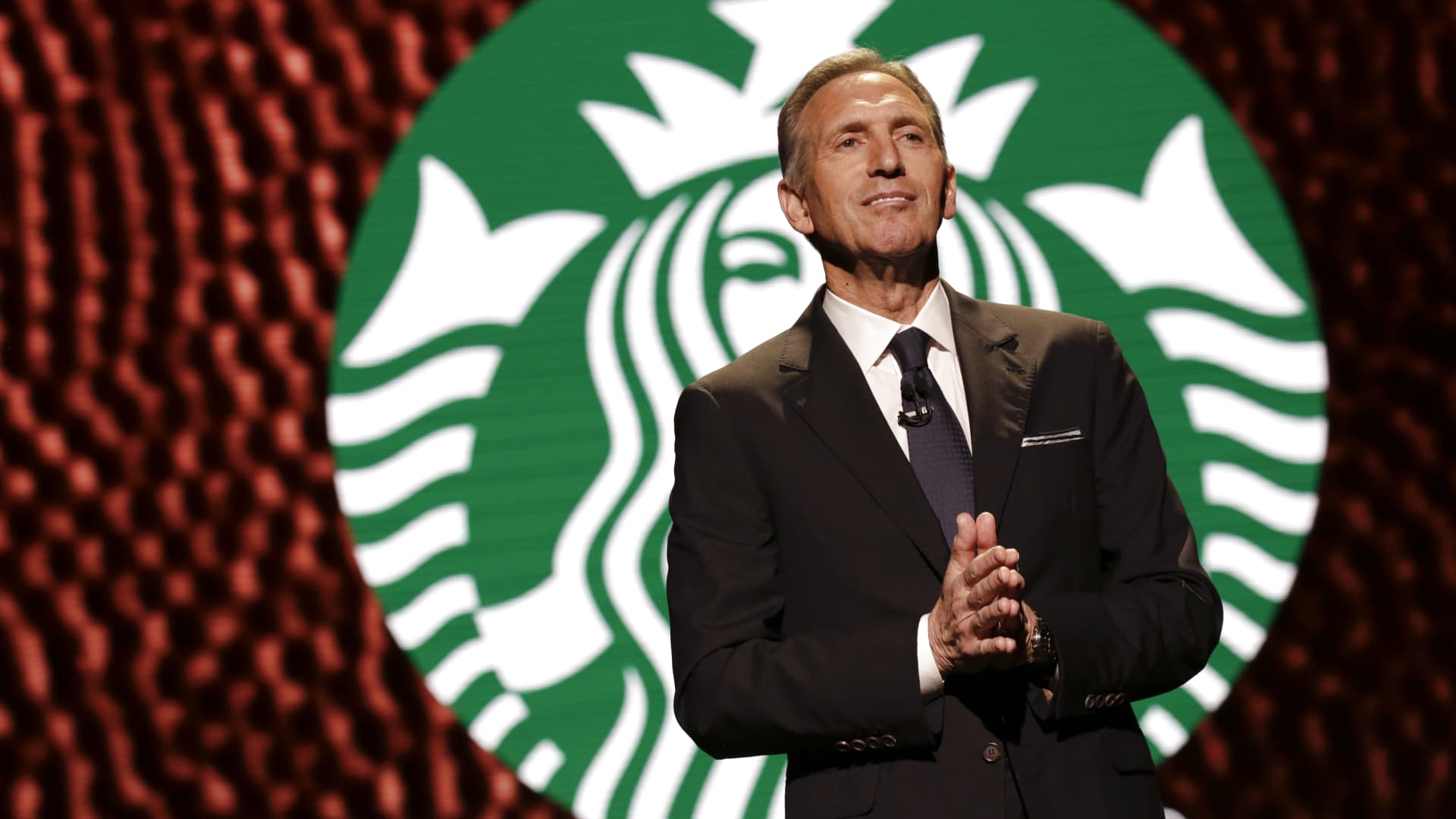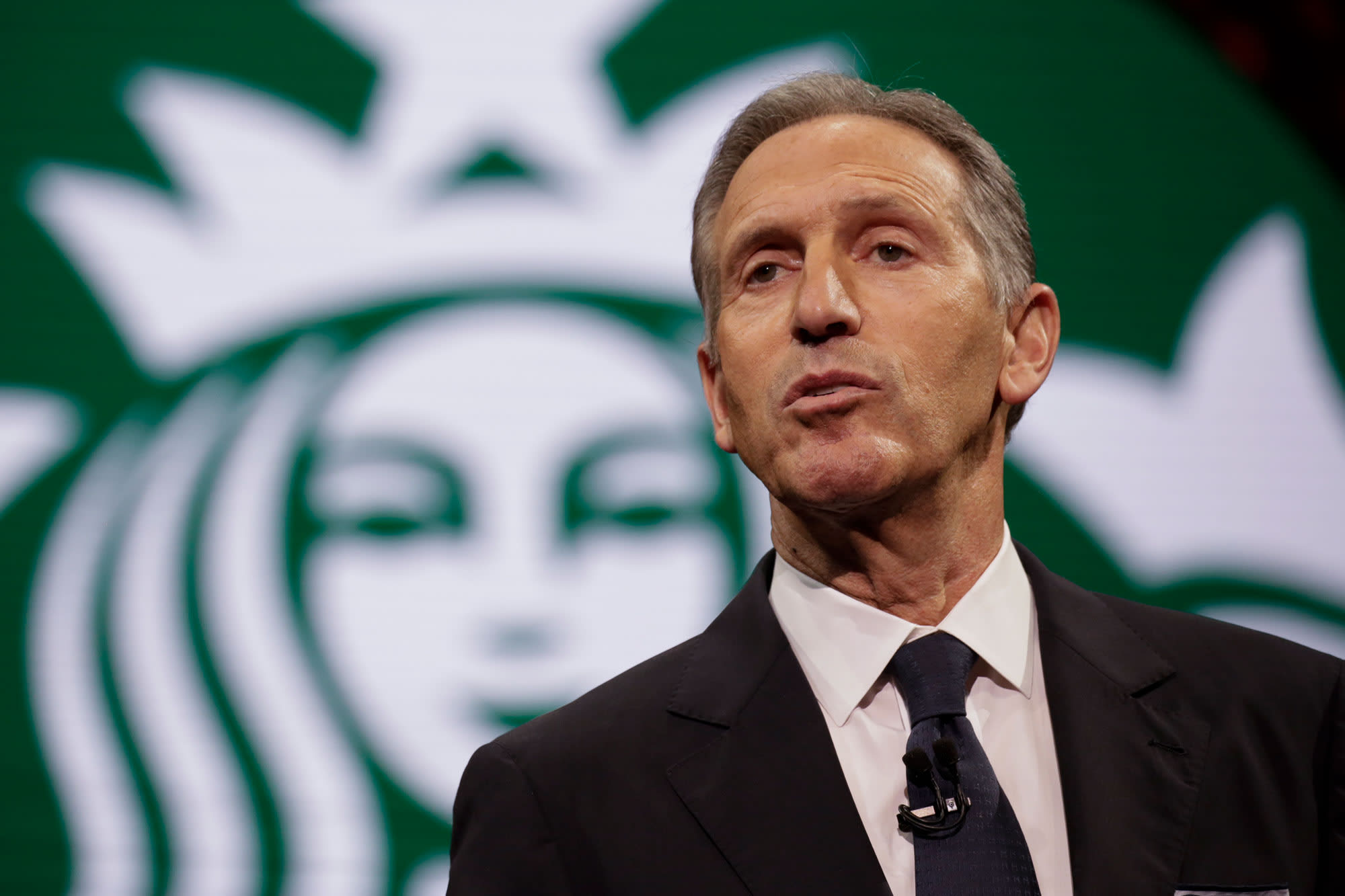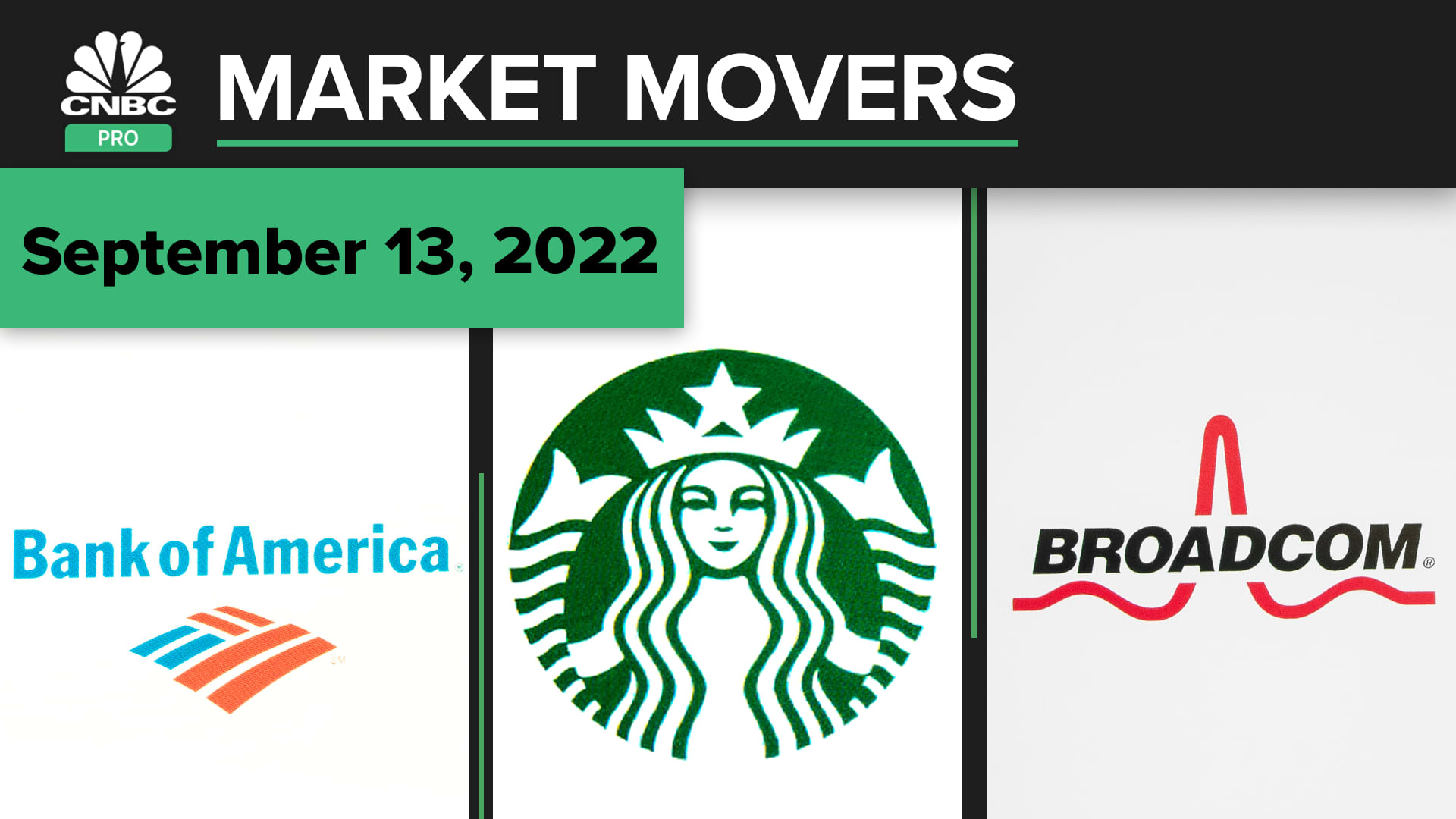Starbucks hiked its long-term financial forecast on Tuesday after outlining a series of changes coming to its cafes as part of its reinvention plan.
The Seattle-based company is projecting earnings per share growth of 15% to 20% annually over the next three years, up from its prior long-term outlook given in late 2020. Global and U.S. same-store sales are expected to rise 7% to 9% annually.
related investing news
Shares of Starbucks rose more than 2% in extended trading.
Earlier on Tuesday, the company outlined its plans for expanding its loyalty program and speeding up operations at its cafes, in part with new coffee-making equipment and automation. The changes are intended to address how Starbucks’ business has transformed in recent years. Its menu has expanded, and cold coffee drinks that often include add-ons now account for 60% of orders year-round. Rather than going to the counter, more customers are going through the drive-thru or using its mobile app.
Despite seeing record demand in the U.S. and abroad, outgoing CEO Howard Schultz said the company was making “self-induced mistakes” and had lost its way.
As it implements its reinvention strategy, Starbucks said it also plans to build roughly 2,000 new U.S. stores between fiscal 2023 and 2025, accelerating its development strategy. By the end of fiscal 2025, it plans to have 45,000 locations worldwide.
Starbucks will also start buying back shares beginning its next fiscal year, which starts in October. Schultz suspended the buyback program in April, using those funds instead to invest back into the business.
The company’s previous long-term forecast had projected adjusted earnings per share growth of 10% to 12%, revenue growth of 8% to 10% and global same-store sales growth of 4% to 5% for 2023 and 2024. In May, Starbucks suspended its fiscal 2022 forecast, citing lockdowns in China, investments in its U.S. employees and high inflation.
Updating Starbucks cafes
In its fiscal 2023, Starbucks plans to invest roughly $450 million to upgrade its cafes with new equipment that will simplify operations and speed up service.
“Our physical stores were built for a different era and we have to modernize to meet this moment,” outgoing Chief Operating Officer John Culver told investors.
With its new cold beverage system, for example, baristas will no longer have to scoop ice, pour milk from a gallon jug or bend down for whipped cream when making drinks. The new system uses dispensers and cuts down the time to create a Mocha Frappuccino from 86 seconds to 35 seconds. It’s been tested in a store, and a second test is planned for January after making improvements based on feedback.
Starbucks is also streamlining its process for making cold brew coffee, which is now a $1.2 billion business for the company. The current process requires more than 20 hours of brewing, with more than 20 steps. The new process automatically grinds and presses the coffee beans and reduces waste by 15%.
And instead of having baristas batch brew hot coffee every half hour, a machine that grinds and brews a single cup in 30 seconds will roll out next year. Even as cold drinks take over, the company sees 15 million customers every month who order brewed coffee.
Food preparation is also changing. Items like Starbucks’ premade sandwiches and egg bites will now be batch cooked and placed in packaging that retains humidity.
Automated ordering will roll out as well in U.S. stores in the next few years, according to Culver. The company said the shift toward automation is meant to give employees more time to interact with customers and relieve them of the more mundane parts of the job.
Linking loyalty programs
A quarter of Starbucks transactions now come from mobile app orders, driven by the company’s loyalty program. The U.S. version of by Starbucks Rewards had 27.4 million active members as of July 3, and they account more than half of the company’s orders.
To keep growing its base of loyal customers, Starbucks has extended its loyalty program technology to licensed cafes, which include locations in airports and retailers like Barnes & Noble. Roughly 20% of its roughly 7,000 U.S. licensed stores are using the technology already.
Additionally, Starbucks will link its rewards program to outside loyalty programs, like those for airlines and retailers. Consumers will be able to earn “stars” by shopping elsewhere or turn their rewards points into airline miles.
Chief Marketing Officer Brady Brewer said the company will announce the first U.S.-based partnership in October.
This autumn also marks the start date for incoming CEO Laxman Narasimhan. He’ll join the company in October and learn more about its operations before officially taking the reins from Schultz in April.
Narasimhan made a brief, surprise appearance during the investor day, speaking about his upbringing, his love for writing poetry and what drew him to Starbucks. He told investors that he uses the name “Laks” when ordering coffee from Starbucks to avoid misspellings.
Changes for baristas
The changes in customers’ ordering habits have added stress for employees. Turnover rates peaked in 2021, according to Frank Britt, Starbucks chief strategy and transformation officer.
Over the last year, Starbucks baristas have been unionizing and expressing dissatisfaction over pay for tenured employees, understaffed stores and other working conditions. More than 230 company-owned Starbucks locations in the U.S. have voted to unionize as of Monday, according to the National Labor Relations Board.
Starbucks has sought to curb the union push by offering better wages and benefits to nonunion workers. Those improvements have also helped with turnover rates in the last five months, Britt said.
As the company met with employees to craft its new strategy, Britt said it’s been looking at fixing the barista experience through the lens of product management.
“You assess the needs of consumers, you segment the needs of consumers, you do a test-and-learn agenda to figure out which of the things you thought could be true work,” he told CNBC.
Starbucks Chief Technology Officer Deb Hall Lefevre said the company is working on an app for baristas that will let them manage their schedules and pay, as well as foster two-way communication with the company and help with career growth.
The upcoming changes for U.S. baristas is just “phase one” of a multiyear plan, according to Britt. The company is also looking to improve the experiences of baristas overseas and for the employees who harvest its coffee beans, work in its supply chain and provide customer support.




